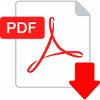How to Play a D13(#5) Chord on Guitar – Easy D Dominant Thirteen Sharp Fifth Guitar Chord

Welcome to our detailed tutorial on the D 13(#5) chord, a fascinating member of the Augmented Chords family. This chord, known for its unique sound and complexity, is composed of seven distinct notes: D, F#, A#, C, E, G, and B. These notes are built through a series of specific music intervals: 1 (Root), 3 (Major Third), #5 (Augmented Fifth), b7 (Minor Seventh), 9 (Major Ninth), 11 (Perfect Eleventh), and 13 (Major Thirteenth).
Understanding the construction and notation of this chord can be a bit challenging, especially for beginners. It requires a solid grasp of guitar music theory and fretboard intervals. If you're new to these concepts, we recommend checking out our comprehensive tutorials on these topics.
The D 13(#5) chord is not your typical beginner's chord, as it's more complex and requires a higher level of skill. It's considered an intermediate guitar chord, often used in genres like Jazz, where complex chord progressions like the maj7, m7, and 7 chord types are common.
In this tutorial, we will guide you through the process of mastering the D 13(#5) chord, complete with chord diagrams and fretboard patterns that clearly illustrate the tones that compose the chord. If you're unsure about any chord shapes shown on the fretboard, feel free to use our interactive tool to analyze them.
So, are you ready to dive into the world of augmented chords and expand your chord vocabulary? Let's get started on the D 13(#5) chord!
Notes in the D 13(#5) chord:
DF#A#CEGB
Tones in the Dominant Thirteen Sharp Fifth chord:
D Dominant Thirteen Sharp Fifth Guitar Chord Fingers Positions
No guitar diagrams created yet for this chord. Request one here
Play This Chord With Other Roots
C 13(#5) | D 13(#5) | E 13(#5) | F 13(#5) | G 13(#5) | A 13(#5) | B 13(#5) | C#13(#5) | D#13(#5) | F#13(#5) | G#13(#5) | A#13(#5) | Ab13(#5) | Bb13(#5) | Db13(#5) | Eb13(#5) | Gb13(#5)
Fretboard map of D 13(#5) chord tones
This fretboard map shows you the tones in the chord all along the neck. You can play this chord by choosing some of the chord tones.
 Download
the Free Guitar Chords Chart Pdf
Download
the Free Guitar Chords Chart Pdf